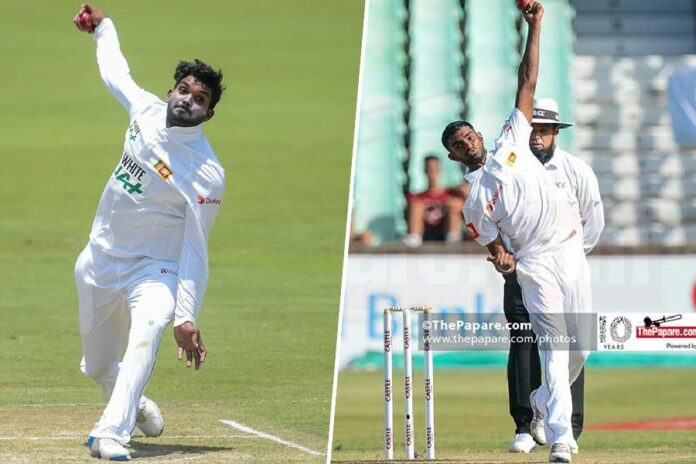Our neighbours India and Pakistan have relied heavily on leg-spin, one of cricket’s hardest crafts to master.
From Abdul Qadir to Yasir Shah, Pakistan have produced some quality spinners who have been their reliable match winners as much as their quicks. India nowadays tend to use their wrist spinners in limited over games but the likes of Lakshman Sivaramakrishnan, a man with names of four gods, to Anil Kumble, one of their most successful captains have had a huge impact in the game.
The modern generation know quite well about the exploits of Siva and Kumble but the older generation is full of awe of Bhagwath Chandrasekhar. Chandra, part of India’s famous spin quartet, was an absolute character of the game who took more wickets in Test match cricket than the runs he scored – 242 wickets in 58 Tests and only 167 runs!
We Sri Lankans tend to rely heavily on finger spinners. There is of course Muttiah Muralitharan with 800 Test wickets to his credit and then Rangana Herath, the most successful left-arm bowler ever. The Boxing Day Test match of 2020 gave us an indication that the Sri Lankans are ready to move on from their heavy reliance on finger spinners as Wanindu Hasaranga was preferred over Lasith Embuldeniya, who was establishing himself in the side.
>>2020 – A Sporting Year in Review
Our most successful leg-spinner is D.S. de Silva, who retired some 35-years-ago. Since then, we have played a few leg-spinners but not persevered with them.
Malinga Bandara was a sensation when he came onto the scene. He made his Test debut aged 18 but did not make an impact although he made several comebacks and went onto play the 2007 World Cup. He was in high demand in County Cricket though and represented Kent and Gloucestershire.
Another Gloucestershire boy was Upul Chandana, who was very good with his control. However, his variations were not so great, something essential to succeed in Test match cricket. He was a reliable lower middle order batsman though and a gun fielder, who entered the cricketing folklore with that run out of Alec Stewart at The Oval in 1998.
Murali had always struggled in Australia – averaging 75. When he skipped the tour of 2004 after then Prime Minister John Howard had questioned his action, Chandana joined the squad and did extremely well, picking up a match bag of ten wickets. Ricky Ponting’s champion side was making life difficult to all teams both home and way and given Chandana’s success you tend to get the feeling that he should have been given a longer rope.
But two things stood against Chandana. A lot of people sidelined him thinking he was more suited for limited over cricket and being a contemporary of Murali – the two players were born within three weeks of each other – his opportunities were limited.
More recently there was excitement again when Jeffrey Vandersay emerged. After prolific success for the unfancied Seeduwa Raddoluwa CC, he got a break at Moors SC. It was when SSC roped him in that more opportunities started coming his way and his debut in white ball cricket in 2015 in New Zealand at the age of 25 got people excited.
Leg-spin is an artistic part of the game that people get hooked onto and Sri Lanka’s coaching staff was beginning to rely on Vandersay as the long-term replacement with Rangana Herath on his last legs. But sadly, he cut his own grave following his night-out in St. Lucia that saw him being sent home from the Caribbean midway through the tour. Vandersay was handed a one-year suspended sentence but more than that he lost the trust of the selectors.
The brief career of Wanindu Hasaranga is something to marvel at. Another product of Richmond College, Galle he was a seam bowler until the age of 17 and took up leg-spin to fit into the needs of the team. He has not looked back since.
Hasaranga made his international debut at his home turf – Galle International Stadium when Zimbabwe were in town. The locals’ excitement knew no bounds when he claimed a hat-trick on debut, only the third man to do so in the history of ODI cricket.
What makes Hasaranga mighty effective is his well disguised wrong’un that is delivered without much change of action from his stock delivery – leg-spin.
When he debuted in Centurion, he was expected to do more of a holding job but after both Lahiru Kumara and Kasun Rajitha broke down, he had to be the attacking option and did so well claiming four wickets. Into the bargain, there was a half-century as well. The Centurion Test had few positives for Sri Lanka and Hasaranga’s debut was certainly the biggest among them.
Despite his overwhelming success on debut, Hasaranga looks more of a one-day bowler than a Test match spinner. That’s mainly because he doesn’t spin the ball much and relies more on over spin than side spin. But hey, he’s been bowling leg-spin for just six years and who knows what’s in store moving forward.
Not a single Sri Lankan leg-spinner has gone onto make an impact in the sport. It remains to be seen whether Hasaranga is going to end that. Let 2021 answer that question.














